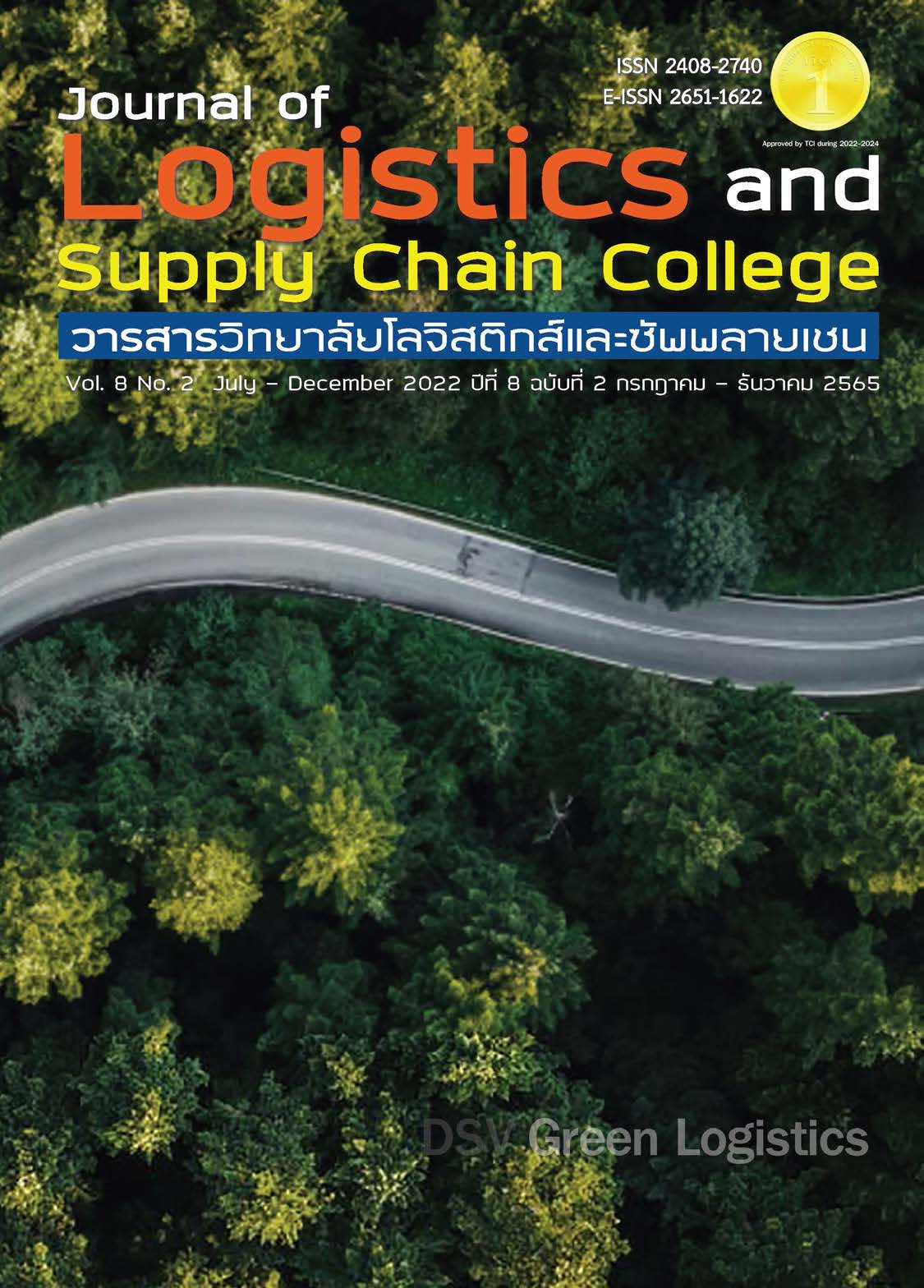Fast Fashion Strategies in Logistics and Supply Chain Management
Keywords:
Fast fashion, Logistics and supply chain management, Fashion industryAbstract
At present, there are more than 20 leading fashion brands in Thailand responding to fashion-conscious demand. Many clothing brand companies are unable to meet the market’s demand for fast equality fashion. The objectives of this article were to (i) to study the best practices in the production process of the fast fashion industry; (ii) to compare the performance, economic, environmental, social, and social media information technology of the best practice in the fast fashion industry; (iii) to analyze the relationship and supply chain management. The study uses primary data of fast fashion patterns and strategies in a supply chain management system, along with a review of management theory, concepts, and fast fashion strategy as a piece of secondary information. From the benchmarking analysis, this study found that the ZARA brand scored the highest (4.8 in the economy and the environment) compared to the other companies. However, the UNIQLO brand scored highest (5.0) in the social impact due to a system to support work-life balance, better indicators of labor practice, and human rights than other brands. Fast fashion differs from traditional supply chain strategies, which consist of a quick response; shortening the production time in each phase, reducing inventory, and being able to respond to the changing needs of consumers quickly.
References
Baghi, I., Gabrielli, V. & Codeluppi, V. (2013). Consumption Practices of Fast Fashion Products: A Consumer-Based Approach. Journal of Fashion Marketing and Management. 17. 206-224. https://doi.org/10.1108/JFMM-10-2011-0076.
Camargo, L., Pereira, S., & Scarpin, M. R. S. (2020). Fast and Ultra-Fast Fashion Supply Chain Management: An Exploratory Research. International Journal of Retail & Distribution Management. 48(6). 537-553. https://dor.org/10.1108/IJRDM-04-2019-0133.
Caro, F. & Martínez-de-Albéniz, V. (2015). Fashion between Zara and Uniqlo. Fast Fashion: Business Model Overview and Research Opportunities. New York: Springer. Retrieved 8 Apr 2019, From: http://library.dip.go.th/multim6/edoc/2557/22631.pdf.
Ellram, L. M. & Cooper, M. C. (1993). Characteristics of Supply Chain Management and the Implications for Purchasing and Logistics Strategy. International Journal of Logistics Management, 4(2), 13-24. https://doi.org/10.1108/09574099310804957.
Ellram, L. M. & Cooper, M. C. (1990). Supply Chain Management, Partnerships and The Shipper-Third Party Relationships. International Journal of Logistics Management, 4(2), 1-10. https://doi.org/10.1108/95740939080001276.
Gallaugher, J. M. (2008). Zara Case: Fast Fashion from Savvy Systems. Retrieved 7 July 2018,
From: http://www.gallaugher.com/Zara%20Case.pdf. published in 9/13/2008.
Hayes, S.G. & Jones, N. (2006). Fast Fashion: A Financial Snapshot. Journal of Fashion Marketing and Management, 10(3), 282-300. https://dor.org/10.1108/13612020610679277.
Jones, G. R. (2002). Organizational Behavior (3rd ed.). New Jersey: Prentice–Hall.
Jones, T. C. & Riley, D. W. (1985). Using Inventory for Competitive Advantage Through Supply Chain Management. International Journal of Physical Distribution and Materials Management, 15(5),16-26. https://doi.org/10.1108/eb014615.
Joung, H.-M. (2014). Fast-Fashion Consumer’s Post-Purchase Behaviours. International Journal of Retail & Distribution Management, 42(8), 688-697. https://doi.org/10.1108/ IJRDM-03-2013-0055.
Mehrjoo, M. & Pasek, Z. (2015). Risk Assessment for The Supply Chain of Fast Fashion Apparel Industry: A System Dynamics Framework. International Journal of Production Research. 54. https://doi.org/10.1080/00207543.2014.997405.
Mimapun, N. (2013). Attitude and Purchasing Behavior of Apparel on Facebook Webpages of Users in Bangkok. Retrieved 10 June 2019, From: www.spu.ac.th/commarts/files/2013/9.
Mongkolsin, T. (2015). Supply Chain Management in the Contemporary Fashion Industry. Executive Journal (Bangkok University), 35(1), 35-43. Retrieved 30 July 2018, From: https://so01.tci-thaijo.org/index.php/executivejournal/article/view/81217.
Nick Octdick, (2016). Let’s Get Vertizontal: Combining Vertical and Horizontal Integration. Retrieved 30 April 2019, From: https://blog.flexis.com/lets-get-vertizontal-combining-vertical-and-horizontal-integrat.
Passariello, C. (2008). Logistics are in vogue with designer-as slump threatens luxury goods, systems to track consumer tastes and tweak offerings win converts. The Wall Street Journal, 54(6), 1115-1131. Retrieved 30 April 2019, From: https://www.wsj.com/articles/SB121451654414108561.
Scott, C. & Westbrook, R. (1991). New Strategic Tools for Supply Chain Management. International Journal of Physical Distribution & Logistics Management, 21(1), 23-33. https://doi.org/10.1108/09600039110002225.
Stevens, G. C. (1989). Integrating the Supply Chain. International Journal of Physical Distribution & Materials Management, 19(8), 3-8. https://doi.org/10.1108/EUM0000000000329.
Thomas, D.J. & Griffin, P.M. (1996). Coordinated Supply Chain Management. European Journal of Operation Research, 94, 1-15. https://doi.org/10.1016/0377-2217(96)00098-7.
Trienekens, J.H. (1999). Management of Processes in Chains: A Research Framework Thesis of the Degree of Doctor of Philosophy. Wageningen Universeit, Wageningen, The Netherlands.
W&S Group. (2015). Fashion market studies Thailand 2015. Retrieved 20 Feb 2019, From: http://www.slideshare.net/WS-Thailand-Market-Research/fashion-market-studiesthailand22042015.



